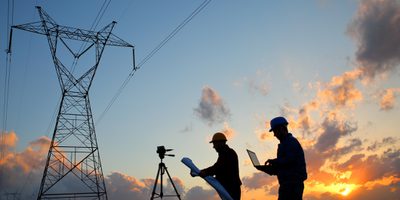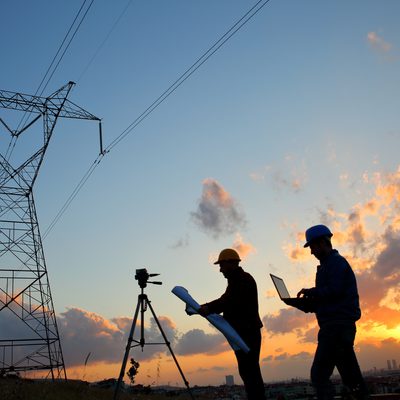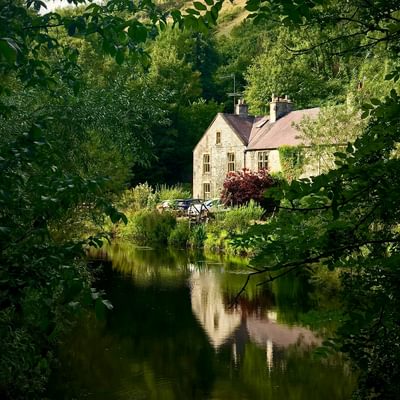
From gridlock to growth

Oliver Wright, CFA
Credit Analyst
Executive summary
- By 2050, European power demand is forecast to increase by 40%. (1)
- Current electricity networks are ill-equipped for the energy transition due to aging infrastructure, a changing electricity system, and a historic lack of grid investments.
- Renewable developers are struggling to connect their projects to the grid, and operators are having to switch off at times due to a lack of network capacity.
- However, utility companies have started to turn the tide on electricity network investment with substantial and increasing capex plans.
- Electricity Networks is a specific sub-theme in the GIB AM Sustainable World Framework, contributing to the overall theme of Clean Energy, linked to SDG 7.
- The Sustainable World Corporate Bond Strategy invests in this theme right across the value chain: 1) Integrated utilities investing heavily in electricity networks, 2) Selective grid utility companies, and 3) Grid cable manufacturers benefiting from long-term growth trends.
Electrification is increasing
In the late 19th century, construction began on the world’s first electricity grids.2 Since then, they have evolved with growing economies and improving technology. But over time, the backbone of our electric system has gradually drifted further away from the spotlight. Now, over 100 years after its creation, the electricity grid is sparking debates again.
As the world tries to decarbonise, economies are poised to become increasingly electrified. Electric vehicles and heat pumps are set to become common replacements for traditional ICE3 vehicles and gas boilers. Additionally, Governments are increasingly concerned about energy security, therefore adopting renewable electricity provides a way for countries to ensure they remain in control of their supply. Consequently, the EU has set a binding target to increase the share of renewables in the energy consumption mix to at least 42.5% by 2030, marking a significant increase from the 23% achieved in 2022.
With the widespread adoption of artificial intelligence, the power demand from data centres is set to increase rapidly. These facilities require huge amounts of electricity to operate – queries from increasingly popular generative AI systems require almost 10x as much power as a Google search.5 Due to this insatiable appetite for power, Europeis set to place an increasingly burdensome demand on the electricity network, with data centres in Denmark forecast to comprise almost 20% of the country’s total electricity by 2026, with the figure even higher in Ireland at 32%. (6) Overall, by 2050, European power demand is forecast to increase by 40% (from a base year of 2020). (7)
All in all, increasing electrification, combined with rapidly increasing power usage by data centres and digital infrastructure, points to a huge increase in electricity demand.
The system is changing
Historically, electricity generation has been dominated by fossil-fuel power stations which are large, few in number, and typically located close to demand centres. However, the significant increase in renewable energy generation poses a challenge for the electric grid system. In many countries, due to newer technologies such as offshore wind, renewable generation tends to be situated in remote locations far from the end demand. As a result, new grid infrastructure needs to be built in order to connect to end-users. As shown below, the modern network system in the UK has far more renewable power plants, in far more remote areas, than ever before. The grid needs to expand in order to fit this new system.
As the system changes, the grid also needs to be made smarter. With increasing numbers of residential solar panels, households will oscillate from consumers to producers of electricity throughout the week, meaning the grid must be able to transport electricity bi-directionally far more than ever before. Investments in smartening the grid are needed in order to increase network efficiency, and further the energy transition.
Networks are aging
Aside from the issues already discussed, the current grid system is aging. In Europe, the average power grid is 45-50 years old. (10) With asset lives of grid infrastructure generally projected at around 30-40 years, this paints a picture of severe under-investment. (11)
The grid has become the primary obstacle for the energy transition
Whilst significant investments have been made into renewable energy projects as part of the energy transition, there has not been a corresponding amount of investment into electricity networks. As seen below, Europe has almost tripled its renewable generation capacity since 2010, whilst the length of the grid has barely changed over the same time frame.
This lack of balance between renewables and network investment has led to huge backlogs in clean energy projects starting to emerge, with over 500GW of total wind capacity across eight countries in Europe currently waiting to be connected to the grid.(14) In the Netherlands, the problem is so acute that there is almost no spare capacity in the grid left to connect up new generation, which is hindering their ability to decarbonise by connecting new North Sea offshore wind projects.
This lack of balance between renewables and networks has also led to increasing curtailment costs in recent years. This often occurs with wind turbines, as there is too much energy being generated which the grid cannot transport. The turbines must be switched off, leading to large amounts of potential power going to waste. In the UK across 2020-2021, enough electricity to power almost 800,000 homes per year had to be curtailed. (16) This wastage costs consumers money and reduces the amount of clean energy in the mix. Ultimately it can be avoided by adapting the grid to fit the modern system.
Major investment is needed
In order to get the energy transition back on track, major investment in electricity networks is required. The EU Grids action plan estimates that €584bn needs to be spent on electricity grids in Europe by 2030.(17) Over the same period, it is expected the UK needs to build 5x more transmission infrastructure than has been built in the country in the past 30 years.18 Due to the severity of the connection delays for renewables and rising curtailment costs, the investment need has become apparent to governments, regulators, and companies. Major utilities and grid companies are announcing huge capex plans in order to solve this problem including TenneT, in the Netherlands, which has announced a ten-year capex plan of €160bn in grid investments. Similarly, in Belgium, Elia has announced a five-year €30bn capex plan, which has doubled twice since 2018, showing the increasing scale of the investments being made into the networks.
AC/DC investing: Opportunities in direct and alternative beneficiaries
Electricity Networks is a specific sub-theme in the GIB AM Sustainable World Framework, contributing to the overall theme of Clean Energy, linked to SDG 7. In the Sustainable World Corporate Bond Strategy, we invest in this theme right across the value chain. From the direct beneficiaries such as the utilities, through to the indirect beneficiaries such as cable manufacturers. Supporting the expansion of the grid is clearly critical in order to enable the world’s transition to a green future; however, the huge capex needed to roll out the grid expansion poses a dichotomy for fixed income investors. On one hand, electricity networks are great debt investments: they are asset heavy, regulated businesses producing stable cash flows; however, on the other hand, huge capex plans have the potential to erode credit metrics.
Integrated utilities
Within the utilities sector, we currently maintain a preference to invest in this theme through the integrated utilities which are investing heavily in electricity networks. We view these network-heavy capex plans as a positive shift in business mix due to the stable, regulated earnings that these investments should deliver. Many of the integrated utilities are able to deliver these capex plans whilst maintaining solid balance sheets. We are currently invested in the hybrid bonds of Iberdrola, a Spanish integrated utility that is investing almost two thirds of its capex (€21.5bn) over the next two years into electricity networks.(20) It is able to do this in a balance sheet friendly fashion, with almost 90% of the entire investment plan being funded through FFO (Funds From Operations), asset rotations and partnerships. (21) The expected improvement in earnings quality, whilst maintaining a strong balance sheet, highlights our preference for integrated utilities with significant networks investment.
Grid utilities
We also selectively invest in this theme through pure grid utility companies such as the Transmission System Operators (TSOs). Given the extremely high capex demands on these businesses, we prefer to invest in companies with a level of state ownership, where the state has the ability and the willingness to support national champions
Grid cable manufacturers
The final way we access this investment theme is via the cable manufacturers. Due to the current capex super-cycle in Utilities, electricity cables are in historic demand and the main players in the space have seen their order backlogs increase materially as a result. One of our holdings, Nexans, a French cable manufacturer, had a Generation and Transmission backlog of €1.5bn in 2021 which has grown to €6.7bn in 2024. (24) We believe that this is a secular growth trend, providing the grid cable manufacturers with a top-line tailwind for years to come.
Final thoughts
As a result of our proprietary thematic framework and deep bottom-up issuer work, the Sustainable World Corporate Bond Strategy is well positioned to benefit from:
- Integrated utilities which are able to invest in grids in a balance sheet friendly manner
- Selective, attractively priced pure grid utilities with strong shareholder backing, who can support large grid capex plans
- Fast-growing grid cable manufacturers which are benefitting from the Utility capex super-cycle
The path to net zero may be a turbulent one, but we believe active investing in electricity networks will prove to be a profitable place to shelter for the astute fixed income investor.
This content should not be construed as advice for investment in any product or security mentioned. Examples of stocks are provided for general information only to demonstrate our investment philosophy. Observations and views of GIB AM may change at any time without notice. Information and opinions presented in this document have been obtained or derived from sources believed by GIB AM to be reliable, but GIB AM makes no representation of their accuracy or completeness. GIB AM accepts no liability for loss arising from the use of this presentation. Moreover, any investment or service to which this content may relate will not be made available by GIB to retail customers.
This content should not be construed as advice for investment in any product or security mentioned. Examples of stocks are provided for general information only to demonstrate our investment philosophy. Observations and views of GIB AM may change at any time without notice. Information and opinions presented in this document have been obtained or derived from sources believed by GIB AM to be reliable, but GIB AM makes no representation of their accuracy or completeness. GIB AM accepts no liability for loss arising from the use of this presentation. Moreover, any investment or service to which this content may relate will not be made available by GIB to retail customers.



